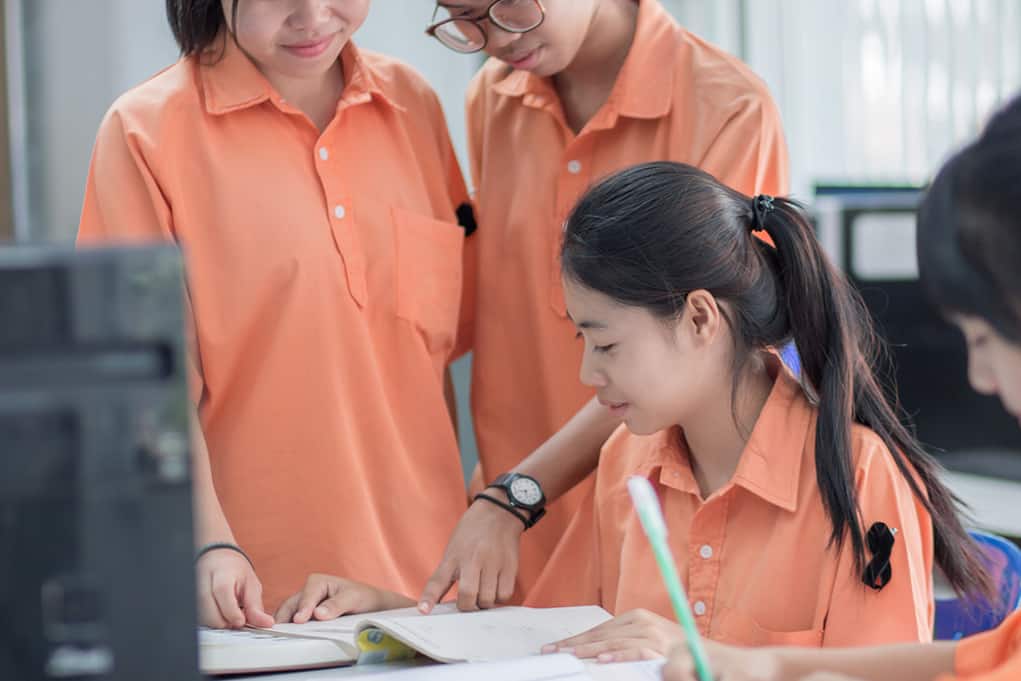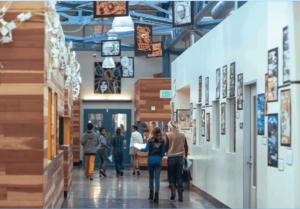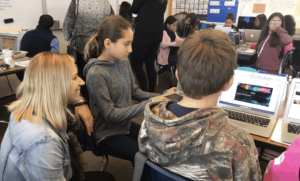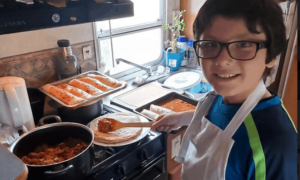Making Project-Based Learning Authentic

By now, the educational benefits of Project Based Learning (PBL) are well documented. Students who participate in high-quality PBL develop skills, processes, and products that are an ideal match for the demands of the 21st century.
That being said, a teacher can design the most complex, differentiated, and open-ended project ever created, but if the students aren’t interested, they won’t engage.
Authenticity is the key.
John Larmer, Editor and Chief of the Buck Institute for Education, points out that “PBL means students are doing work that is real to them–it is authentic to their lives–or the work has a direct impact on or use in the real world.”
It is essential to maintain this emphasis on authenticity throughout the PBL process–from planning through the final product. Without it, students are not realizing the full benefit of the PBL paradigm shift.
Focus on Problems Relevant to Your Students
One of the crucial steps in designing PBL experiences is finding ways to connect the content of a PBL unit to students’ felt need for learning it. Teachers must foster that connection between standards-based content and student interest through purposeful design and planning.
First and foremost, teachers need to understand their students’ interests and passions. Whether those interests are local school matters, defending personal beliefs, serious social issues or personal challenges, tapping into student interests will help drive student effort.
For instance, my seventh-grade social studies curriculum includes the North American arrival of Christopher Columbus. My pre-teen students have a vested interest in, as they put it, “not being treated like little kids.” As such, my PBL unit homes in on this desire with a simple, powerful opening message:
Over the course of your young history and social studies careers, you have been lied to. You have been lied to a lot. School, movies, and television have all presented information to you that is not true but presented as historical fact.
Year after year, the students are hooked. We look at the Columbus story in its childish, cartoon form, and contrast it with Howard Zinn’s horrific account from A People’s History of the United States. The students then use this standards-based example to build a deeper understanding of the historiography concept and the importance of multiple perspectives.
Students wield that understanding to seek out and research examples from their own educational experiences where they were not given the complete historical picture. The final product is a series of student-created e-books that are shared with younger students to prevent the cycle of watered-down children’s historiographies from continuing.
It is the authenticity embedded in the opening hook that serves as the driving force for the entire PBL experience.
Empower Students to Identify and Solve Relevant Problems
Authentic problems are complicated. In the real world, problems are rarely solved by following a single path toward a single outcome. Instead, complex issues usually involve identifying and solving a series of smaller problems along the way.
PBL units should reflect this authentic style of problem-solving.
Teachers can foster this type of authenticity with a focus on facilitating student hypothesis creation and testing. As much as possible, students should be the ones in the driver’s seat when it comes to investigation, problem-solving and decision-making (although teachers may need to help steer from time to time).
One way to accomplish this is to incorporate opportunities for student debate and discussion throughout the PBL process. These conversations can be carried out in a variety of ways including traditional face-to-face discussions, classroom debates and digital forums. Objectives should include authentic tasks like collaboratively unpacking ideas or consensus building. Furthermore, documenting these opportunities with purposeful note-taking and reflection provides authentic formative assessment opportunities.
Regardless of the medium, this type of engagement allows students to identify and grapple with the authentic problems that arise as they delve deeper into the relevant content. Moreover, students are carrying out this process in an authentic manner that is reflective of problem-solving processes that occur in the real world.
By making the problem-solving process as authentic as possible, students are given the opportunity to curate skills and experiences that transcend the curriculum.
Promote Student Ownership with Meaningful End Products
From the outset, students need to buy into the notion that their work means something. While the outcome of an authentic PBL unit may shift throughout the process, students need to believe that the results of their efforts matter.
As Dr. Nancy Sulla, Founder and President of Innovative Designs for Education attests, “You’ll find that when students find they are making a difference, they rise to the occasion.”
Just as both an authentic task and authentic problem-solving matter, so does an authentic product. There are a number of factors that determine whether or not a PBL product is truly authentic:
- Is the product meaningful to the student?
- Does the product reflect both curricular and student growth goals?
- Does the product fulfill an actual purpose (beyond a summative assessment)?
- Is there an audience for the project beyond the classroom?
- Is there a way for students to receive authentic feedback from relevant stakeholders?
The more positive responses to the aforementioned questions, the more authentic the PBL product likely is.
In my Christopher Columbus PBL unit, students are consistently working towards creating a children’s book to be shared with younger students. They are motivated to break the cycle of deceptive historiographies geared towards children. They are also held accountable by the fact that their published e-books will bear their names as the researchers, editors and authors.
The product has an authentic purpose, an authentic audience, and an authentic form of personal ownership. Curricular goals are met, real-world skills are fostered, and the process genuinely affects students’ thought processes.
Teachers that are able to weave a thread of authenticity throughout the entire PBL process set students up for optimal engagement, growth and success. At times, finding this thread can be challenging, but the resulting positive impact on students makes it well worth the effort.
For more, see:
- 3 Tips for Planning Authentic PBL Projects
- Does Your Teaching Have the 4 Categories of High Quality PBL?
- Allowing Authentic Discovery in the Middle School Classroom
Sheldon Soper is the Content Writer at The Knowledge Roundtable. Follow him on Twitter: @SoperWritings
Stay in-the-know with all things EdTech and innovations in learning by signing up to receive the weekly Smart Update. This post includes mentions of a Getting Smart partner. For a full list of partners, affiliate organizations and all other disclosures please see our Partner page.







Thom Markham
This is a very engaging project, but does not meet the threshold for high quality PBL, which is always organized around a 'problem to be solved.' Lots of choices here, but one possibility: 'How can we as historians develop more reliable criteria for analyzing historical events?
Replies
Sheldon Soper
I like your suggestion. As a problem, it addresses one of the main reasons I use the Howard Zinn text as a stark contrast to the sterilized and factually inaccurate cartoon: effective historiography is an amalgamation of multiple perspectives and viewpoints. Students come to grips with this reality in both the texts we work through and the products the students create.
The underlying problem this unit addresses as it is currently implemented is, "Is it possible to present historical content to children in a way that is both accurate, understandable, and age-appropriate rather than in a sterilized and over-simplified form?" Given the portrayals of historical events in the media and in children’s materials, this is a problem holds particular relevance to 12 year-olds in the throes of the coming-of-age years – why is it that they are kept from historical truths, or worse, knowingly presented with inaccurate versions of historical events?
In the creation of their products, students are driven by the felt need to correct the inaccuracies of their past social studies/historical educational experiences . They are creating authentic products to see if it is possible to prevent the cycle from continuing. By actually bringing them to the appropriate audience (in this case 3rd graders), they have the opportunity to see if their hypotheses and efforts to create more historically accurate portrayals achieve their aims.
My complete unit task statement is available here: https://goo.gl/pWQJ5K . I welcome any further feedback you have to offer!